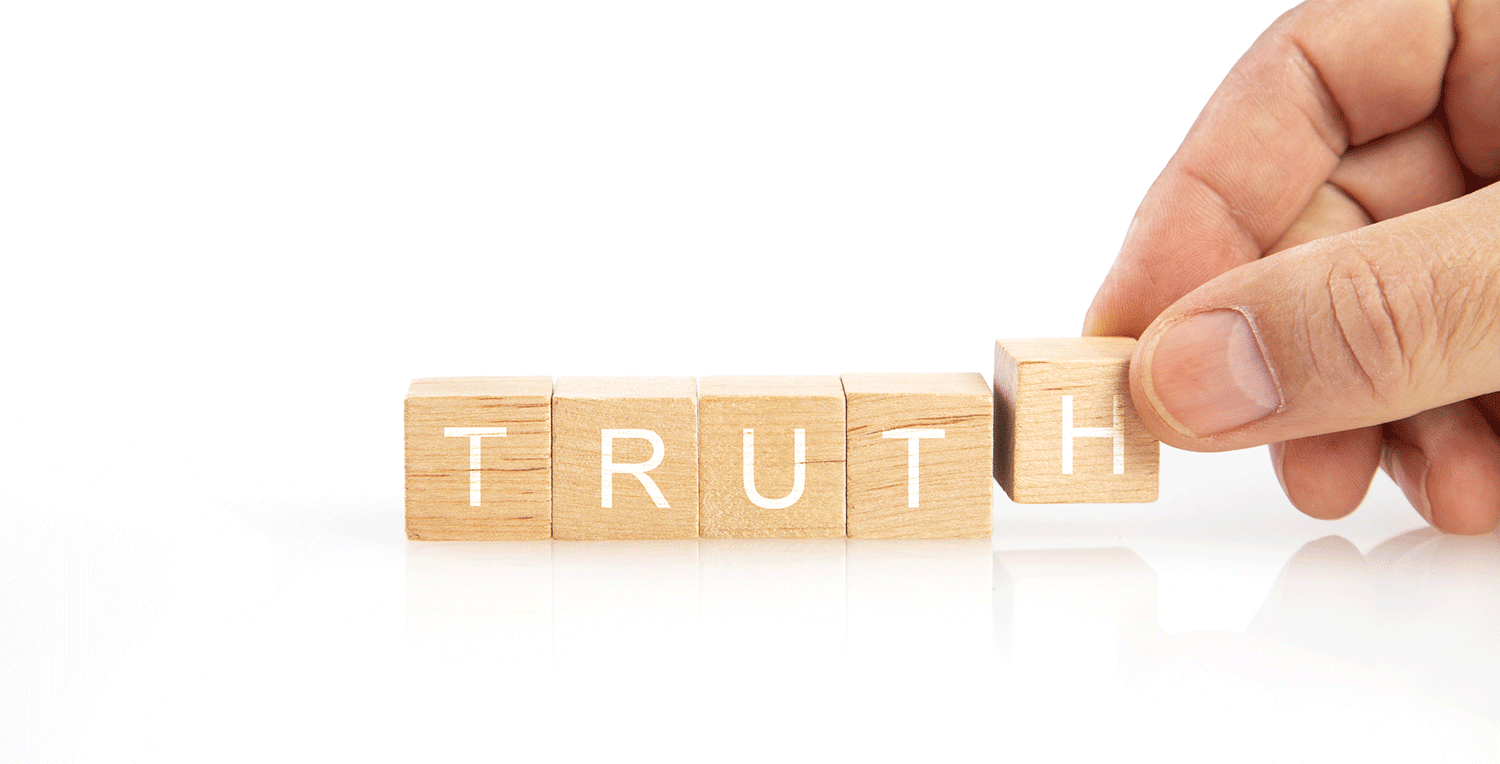Note: This article originally appeared in the Fall 2005 edition of MeadowLark, the magazine for alumni of The Meadows.
Some Thoughts on Rigorous Honesty
By John Bradshaw
Because lying to ourselves (denial) is the core of all
addictions, the various
12-Step groups stress living in a rigorously honest way as the sine qua non of character rebuilding. Over the 40 years I’ve spent going to meetings, I’ve never heard anyone discuss what I’ve discovered in myself as “unconscious dishonesty.”
Dealing with my unconscious dishonesty has been a critical part of my recovery. I’ve found two major areas of unconscious dishonesty. One stems from what the psychologist Carl Jung called “the shadow” of the psyche. The second stems from the contamination of my fundamental childhood wound. My shadow dishonesty manifested itself in gossiping, criticizing and being judgmental of others. My core childhood wound, engulfment, manifested itself in my closest relationships as the avoidance of intimacy, the need to control, and fantasies of being used by my partner. Let me briefly elaborate on both of these areas of unconscious dishonesty.
Shadow Issues

Jung’s idea of the shadow includes what have been referred to as “shame binds,” as well as one’s past behaviors that one considers unacceptable and disgusting. Our shadow also contains unrealized positive parts of ourselves, which is why embracing our shadow (toxic shame) can lead us to the discovery of the many potential strengths we are capable of actualizing.
The parts of myself that I repress and the behaviors that I cannot accept are unconsciously projected onto others. Over many years, my repressed parts and my detestable behaviors become unconscious. I have engaged in gossip and criticism of others, especially of those in the recovery community. I also have been the object of the vicious jealousy of others.
Early on in the 12-Step groups I attended, I heard the old timers warn against taking other people’s inventory. Yet I still find judgment, gossip and criticism of others widespread in the 12-Step groups I attend.
I have worked hard to uncover my shadow, and, while I slip occasionally, I have made great progress. I’m certain that my dishonesty in judging, criticizing and gossiping about others destroys the quality of my sobriety.
Our Primary Wound
Each of us carries some degree of “woundedness.” The wounds we carry from our family of origin, especially if our family was severely dysfunctional, are the most damaging. All forms of abuse (including neglect, abandonment and enmeshment) set us up to miss meeting important developmental dependency needs. Our developmental deficits form the core symptoms of codependency.
My roles in my dysfunctional family of origin were “star” and “caretaker” of my mother’s pain. I was enmeshed as her surrogate spouse and “carried” her rage, shame and unresolved sexuality. An unresolved wound pervades our consciousness and gnaws at us like a painful toothache. Over the years, we become so used to defending against our wound that we lose consciousness of what we’re defending against. We can see or hear something dangerous and threatening in almost anything our spouse or an intimate friend says to us.
In my book, Creating Love, I describe the phenomena of defensive behaviors as trance states. Following Freud, I speak of ego defenses as auto-hypnotic traumas. We can engage in positive or negative visual fantasies about those closest to us. We can see something that isn’t there or imaginatively contaminate something we do see.
A smile can become a smirk; apathetic eyes can be seen as uncaring. People with unresolved wounds continually “make up” things about those with whom they interact. When we do this, we are in a delusional trance state: “Delusion is sincere denial.” Our shadow and our primary wound keep us in a dishonest, defensive, delusional state.
[perfectpullquote align=”full” bordertop=”false” cite=”” link=”” color=”” class=”” size=””]We can engage in positive or negative visual fantasies about those closest to us. We can see something that isn’t there or imaginatively contaminate something we do see.[/perfectpullquote]
Repair Work
Recovery calls us to continually work to be more rigorously honest. Rigorous honesty means confronting my shadow and giving up the defensive delusions that guard my wound. The mechanics of repair are too complicated to present in a short article. An example will have to suffice.
Embracing Your Shadow
A simple way to uncover unconscious shadow material is to ask yourself what the people closest to you habitually say about your behavior that causes you to energetically defend yourself. Your spouse, children, family and close friends know you better than anyone else. They experience firsthand the contradictions in your behavior. The intensity of one’s defensive energy (especially rage) is key in making shadow material conscious.
Tracking Your Wound
I look at rigid family-of-origin roles, as well as what psychologist John Money describes as a “love map,” in order to become aware of one’s primary wound.
My dysfunctional alcoholic family pushed me into a “star,” “caretaker” of my mother’s pain, “surrogate spouse” role. These roles required me to have certain feelings, such as joy, courageous silence in the face of pain, and intense interest in selfless moral behaviors. These feelings and other concomitant behaviors are highly valued and were attractive to my love partners. But behind my rigid caretaker façade were other feelings, such as rage, fearful hyper-vigilance and shame.
When my love partner or good friend got too close, she experienced my dark side, my shame/rage/blame game, and my real dislike of taking care of others all the time. Rage particularly kept me guarded and non-intimate. My rage was almost always dishonest.
Our “love map” is formed during our early developmental stages ( ages 3 to 8 ) when our sexual identity is first being formed. Our “love map” is composed of the voices and behaviors of our most significant source figures. It also is shaped by our primary wound. If we liked our mother’s or father’s sense of humor or we admired their physical appearance, these images become a part of our “love map.” Our “love map” also contains our source figures’ negative character traits. My love map contains an image of a dark haired, seductive woman who is fearful, needy and depressed, as well as my father’s frivolous irresponsibility. It contained (prior to recovery) my parents’ intimacy dysfunction that each guarded dishonestly – my father with his
sex and
alcohol addictions, my mother with her
codependency.
Until I did the grief work that involved family-of-origin issues, I could not be honest in my marriage or my post-divorce love relationships. It is imperative that abused and/or enmeshed people realize how difficult it is to be intimate, and therefore honest, without first doing the grief work that allows emotional separation from one’s primary source figure(s).
I show people how their wounds and love maps contaminate their intimate communications. I use a tool called “the Awareness Wheel,” developed by Sherod Miller, Elam Nunnally and Dan Wackman in their book Alive and Aware. The Awareness Wheel includes four areas of consciousness:
- Sensory facts (what you see and hear)
- Interpretations (your fantasy about what you’ve seen and heard)
- Feelings (the feelings that result from your fantasy)
- Desire or wants (what you want from the other person)
The place where our wound is most likely to distort our communication is on the second level of awareness. Our interpretations (unless we are in the realm of pure, formal logic) always involve some element of imagination. We cannot know for sure what is going on inside another person’s skin. [perfectpullquote align=”right” bordertop=”false” cite=”” link=”” color=”” class=”” size=””]Our interpretations (unless we are in the realm of pure, formal logic) always involve some element of imagination. We cannot know for sure what is going on inside another person’s skin.[/perfectpullquote]
Our interpretations are partly fantasies based on the sensory data we observe, which then trigger an emotion and some element of volition.
Let me conclude with an example. A few years ago, my fiancée (now my wife) and I were in Dublin. After finishing leading an inner-child workshop, we decided to take some time to explore. While visiting some historic sites in Dublin, my fiancée Karen saw an antique store she wanted to explore. I told her that I had all the antiques I ever wanted and I did not wish to buy any more. She had some lovely antiques herself and agreed. As we browsed, I saw Karen talking to the owner of the store. I heard her say, “I’ll call you tomorrow.” Immediately I felt my stomach muscles tense and my throat go dry, and I recognized these bodily signals as the first feeling of rage. I had done years of work learning to contain anger and to separate from the rage I carried from my enmeshment with my mother.
As we walked out of the store, I knew I had to express my anger before it became reactive rage. I used the Awareness Wheel as my guide. My disclosure was as follows: “Karen, I saw you talking to the antiques shop owner. I heard you say, “I’ll call you tomorrow!” My fantasy is that you are going to buy an antique (with my money because I knew she didn’t have the money to buy an antique). I feel angry because we agreed to not buy any antiques, and I want to know your intentions.”
At that time, Karen and I were seriously working on tools for conflict resolution. Karen repeated to me what she heard me saying and waited for me to verify that what she repeated was what I said. When I verified her response, she said, “Yes, I am going to buy an antique. My mother gave me money to buy you a birthday present!” When I heard her reply, I realized that my fantasy interpretation was contaminated by my wound of being used by a woman. During our three-year engagement, Karen had never done anything to suggest that she was trying to use me for my money. My wound (which I thought I had under control) festered up and formed my judgment, which triggered my anger. I felt like a jerk and apologized profusely. I hope you can see how a wound (even after years of recovery work) can distort communication and make what seems like righteous anger an expression of dishonesty.
Recovery is an ongoing process, which requires the continual working of maintenance steps 10 and 11. These steps help make me willing to work at uncovering my unconscious dishonesty.
 Jung’s idea of the shadow includes what have been referred to as “shame binds,” as well as one’s past behaviors that one considers unacceptable and disgusting. Our shadow also contains unrealized positive parts of ourselves, which is why embracing our shadow (toxic shame) can lead us to the discovery of the many potential strengths we are capable of actualizing.
The parts of myself that I repress and the behaviors that I cannot accept are unconsciously projected onto others. Over many years, my repressed parts and my detestable behaviors become unconscious. I have engaged in gossip and criticism of others, especially of those in the recovery community. I also have been the object of the vicious jealousy of others.
Early on in the 12-Step groups I attended, I heard the old timers warn against taking other people’s inventory. Yet I still find judgment, gossip and criticism of others widespread in the 12-Step groups I attend.
I have worked hard to uncover my shadow, and, while I slip occasionally, I have made great progress. I’m certain that my dishonesty in judging, criticizing and gossiping about others destroys the quality of my sobriety.
Jung’s idea of the shadow includes what have been referred to as “shame binds,” as well as one’s past behaviors that one considers unacceptable and disgusting. Our shadow also contains unrealized positive parts of ourselves, which is why embracing our shadow (toxic shame) can lead us to the discovery of the many potential strengths we are capable of actualizing.
The parts of myself that I repress and the behaviors that I cannot accept are unconsciously projected onto others. Over many years, my repressed parts and my detestable behaviors become unconscious. I have engaged in gossip and criticism of others, especially of those in the recovery community. I also have been the object of the vicious jealousy of others.
Early on in the 12-Step groups I attended, I heard the old timers warn against taking other people’s inventory. Yet I still find judgment, gossip and criticism of others widespread in the 12-Step groups I attend.
I have worked hard to uncover my shadow, and, while I slip occasionally, I have made great progress. I’m certain that my dishonesty in judging, criticizing and gossiping about others destroys the quality of my sobriety.

